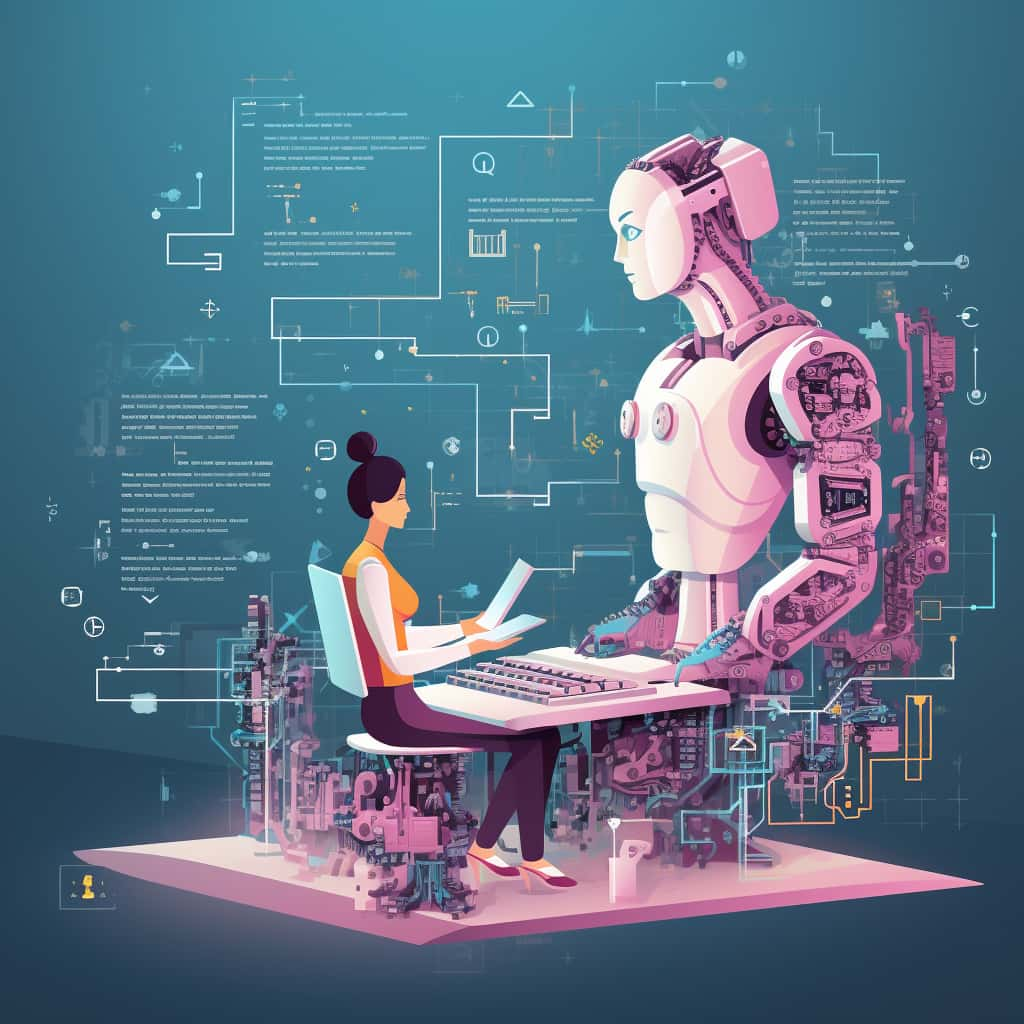
AI Copywriting: How a Tool is Changing an Industry
When we think of AI-generated content, we might assume that the tone will be robotic, the content unoriginal, and the structure rigid. Turns out, nothing could be further from the truth. Rapid advancements in AI language models have resulted in AI copywriting and AI-generated content that are on par with the output of well-researched human-generated copy.
The universal rise of AI is influencing content production across global industries so rapidly that it has become impossible to ignore. Adopting AI copywriting tools is quickly becoming a more and more popular option for copywriters, as there is an awareness that if you do not adopt it, you are competing with it.
The ever-expanding capabilities of AI copywriting have redefined the landscape of content creation. The development of AI content tools was likely to exceed expectations; however, the broad spectrum of uses – which include research, data analysis, identifying trends, and automating writing tasks – has allowed copywriters to develop a formidable ally in AI copywriting and AI-generated content creation with data-driven insights and the ability to maintain a consistent tone and style.
An AI copywriter aids our creative process by using its analytical prowess to gain valuable insights into research topics.
At AlphaQuad (our digital marketing agency), we recognise the potential that AI copywriting has within digital marketing and incorporate it into our work. An AI copywriter (we will name-drop ChatGPT-4) aids our creative process by using its analytical prowess to gain valuable insights into research topics for various content mediums such as articles, blogs, content strategies, social media posts, etc. AlphaQuad’s relationship between human creativity and AI copywriting’s efficiency allows us to deliver top-tier content more efficiently and at a lower cost.
Explore how AlphaQuad leverages AI in content marketing, and check out our comprehensive content marketing services.
However, it is worth mentioning that we also remain mindful of the balance between creativity and efficiency. AI copywriting tools can significantly optimise our work but cannot see the larger picture that a more traditional human writer can effortlessly accomplish (yet). The richness of human experience, the spark of originality, and the ability to establish intuitive connections are elements that artificial intelligence in marketing cannot replicate.
The Capabilities of AI Copywriting and AI-Generated Creation
While AI copywriting’s capabilities will only expand in the coming years, what AI copywriting tools are already capable of is remarkable. Here are some of how AI content tools are used today:
Writing Articles and Blog Posts
AI tools like GPT-4, Claude 2 and similar language models are used to create content for articles, blog posts, and even books. They can help generate new ideas, create drafts, and proofread.
Social Media Content
AI copywriting tools can help craft social media posts, develop strategies, and automate posting schedules. They can analyse successful past content to generate new ideas and create variations on successful themes.
Video Production
AI content tools aid in automated editing and intelligent scene curation and offer improvement suggestions, optimising processes and enhancing content quality for creators in today’s digital landscape.
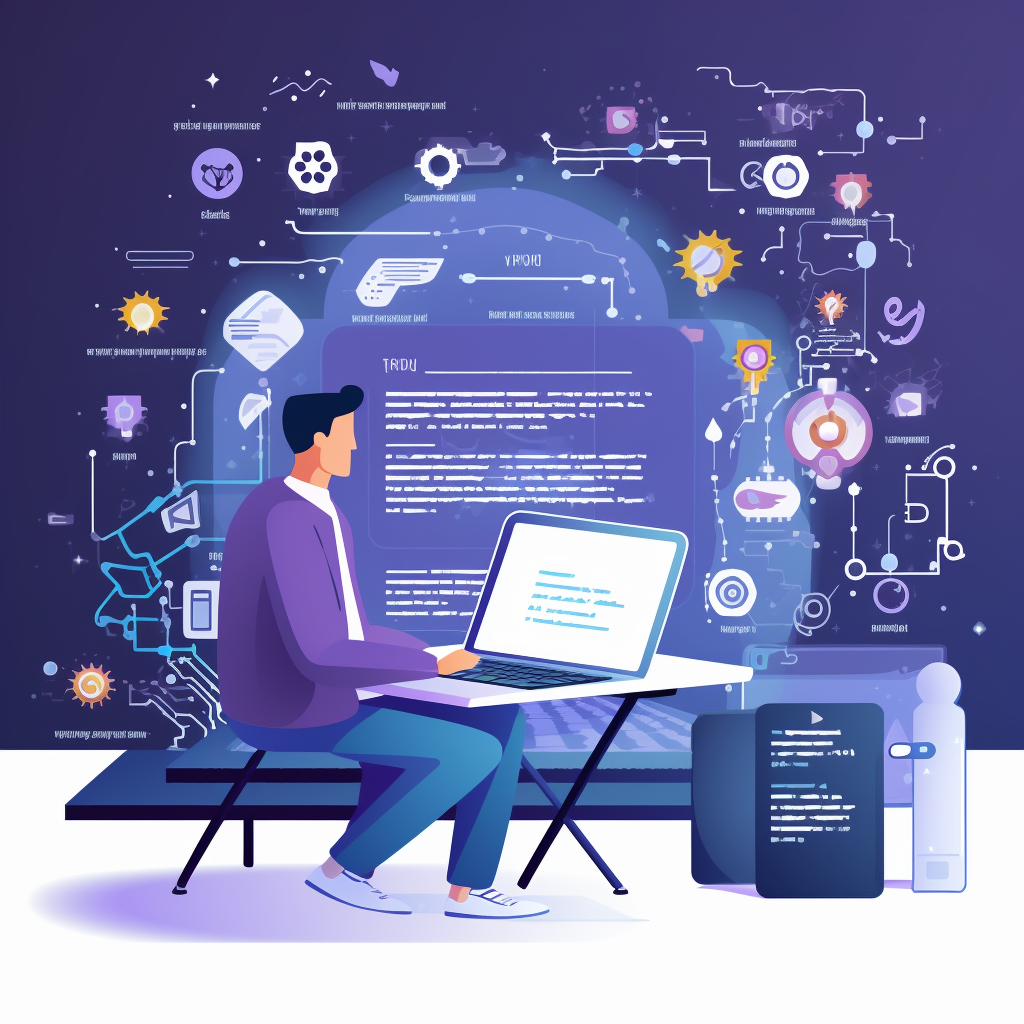
AI content tools are transforming the marketing sector. They elevate ad content and optimise A/B testing for traditional and online PPC campaigns.
AI Copywriting for Advertising
AI copywriting is transforming the marketing sector and bringing forth ethical challenges like data privacy and transparency. When used correctly, these AI content tools prove invaluable. They elevate ad content and optimise A/B testing for traditional and online PPC campaigns, predicting the most impactful copy variations.
Website Design
AI is used in web design to automate the design process. AI content tools can create website layouts based on user preferences and AI-based UX analysis.
Graphic Design
AI content tools also create graphic designs, logos, and branding elements. It can generate several design options based on specific parameters, reducing the time taken in the initial design stages.
SEO Content Optimisation
AI copywriting tools can analyse content performance and suggest changes to improve SEO, readability, and engagement.
Discover how AlphaQuad’s AI-enhanced SEO strategies are driving superior search engine rankings.
What does AI copywriting mean for a digital marketing agency like AlphaQuad?
With the capabilities of AI copywriting tools considered, there is also the significant caveat of understandable fear about job displacement resulting from AI’s advancements, and the digital marketing industry is no exception. At AlphaQuad, our view of the matter is rather black and white. We aim to use AI copywriting tools to produce the best copy on budget and on time.
While AI copywriting tools are quite marvellous, we maintain that there is no replacement for the insight of a human writer and the voice of the person who sits before a keyboard and a blank document. The relationship between human and AI copywriters can be harmonious, provided we use these tools appropriately.
Learn more about our digital marketing audits, where we blend AI insights with human expertise for unparalleled accuracy.
We aim to use AI copywriting tools to produce the best copy – on budget and on time.
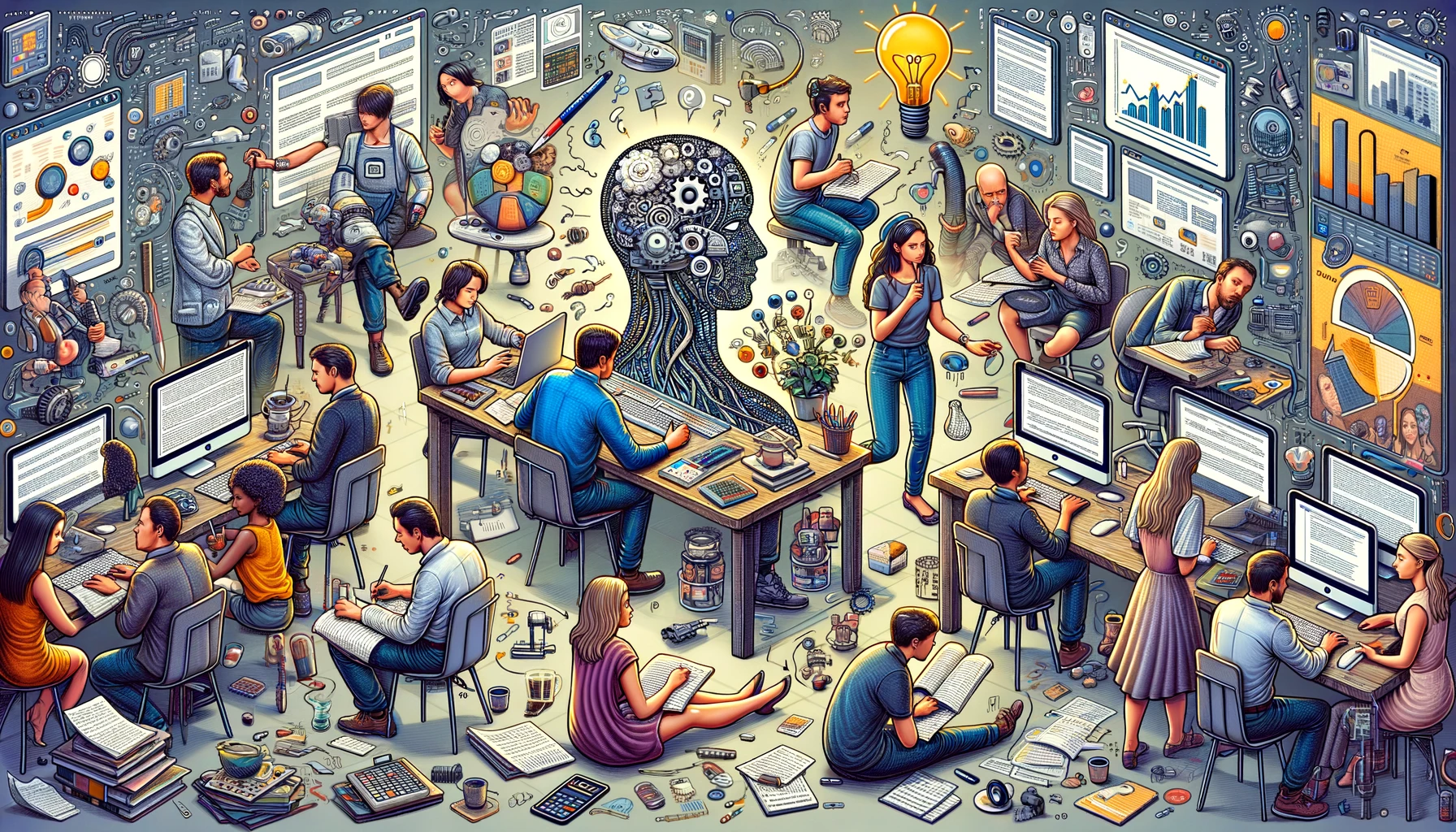
The Challenges of Producing Good Copy
Producing engaging copy can be challenging. Engaging copy, whether through copywriting with AI or traditional methods, demands a keen understanding of the subject matter, an informed comprehension of the audience, and the ability to craft a message that resonates with said audience. It is also important to ensure the brand’s tone and style consistency throughout the content. Many challenges can arise for copywriters, most based on human error and emotion getting in the way of producing content. These challenges can include a lack of clarity, writer’s block, and receiving feedback that requires revisions. These challenges can be overcome eventually; however, with an AI language model, these quandaries can be overcome even sooner.
There are other significant examples when considering the challenges of producing good copy.
Understanding and Empathising with the Audience
Understanding and empathising with the audience requires deep diving into their needs, preferences, and expectations, ensuring that the content speaks directly to them and their experiences. This is a central point in Google’s guidelines for website owners where it pushes EEAT (expertise, experience, authority and trustworthiness to the front). We take this very seriously as we write a lot of copy for websites.
Maintaining Originality
To maintain originality amidst the onslaught of AI-generated copy online, copywriters must consistently develop unique content that stands out in an already crowded digital landscape. This is where AI copywriting tools can be helpful. AI language models generate content quickly. However, an over-reliance on these tools leads to low-quality, unoriginal content that, for lack of a better phrase, quite literally reads like a robot wrote it. When AI-generated copy goes unedited by a human, there will likely be no personality or distinguishable voice that one can decipher from reading. An AI copywriting tool can mimic human language and tone but cannot understand context and subtlety or create a consistent emotional connection with readers.
Human involvement in content creation remains a vital element. An AI language model can struggle with complex tasks that require a degree of nuance that it doesn’t have (yet). An algorithm can’t replicate the power of human creativity, intuition, and empathy. Human writers bring an understanding of context, culture, and emotional nuance to their work. Humans can inject humour, stir emotions, tell stories, and create a meaningful connection with the reader in a way that AI can’t yet match. So, while there are concerns over “will AI replace writers?” the unique abilities of human writers suggest otherwise.
We also need to talk about ‘hallucinations’, a term that could only be coined by software developers (or politicians) to describe complete and utter lies. AI content generation systems have an uncanny ability to present made-up information as if it were 100% true. When we have AI systems with a face, it will be a poker one.
We find it sensible to verify all information produced by AI systems, check the sources, and, in the case of images – count the fingers!
While AI offers exciting possibilities for content creation, more is needed to replace the value and depth that human involvement brings to the process. AlphaQuad strives to marry the best of both worlds – leveraging AI’s efficiency while championing our human team’s irreplaceable creativity and intuition. The optimal content strategy lies in this harmonious blend of technology and human talent (a sentence created by Chat-GPT with this little addition to illustrate some human involvement – see what I did there)
Human involvement remains a vital element. AI can struggle with complex tasks that require a degree of nuance.
The Efficiency and Quality of AI-Generated Copy
The surge in popularity of AI-generated content has led to significant efficiency improvements. AI can create content much faster than people. Mahendra (2023) writes, “AI can process information billions of times faster than us [humans], enabling it [AI] to make decisions quickly.” An AI copywriting tool can produce an article in minutes, whereas it would take a human writer much longer. If we were to discuss intelligence, it could be argued that in a purely convergent manner, AI is smarter than us for specific tasks. Although, AI doesn’t have biological intelligence…just artificial. AI is yet to become a master at multitasking; it can currently handle one task at a time
Kashyap (2022) writes, “82% agree that while AI-generated content is not perfect, it is as good as the content generated by humans.” Meanwhile, Capterra’s 2022 study of digital marketers’ use of AI provides a wide range of useful insights as to how AI content tools are utilised daily. According to this study, an array of purposes are present, with each being used more than others; they are as follows:
- 63% used for email marketing
- 58% used for advertising
- 57% used for data analysis
- 45% used for audience targeting
- 40% used for SEO optimisation
- 34% used for lead generation
- 33% used for AI-generated content
These figures clearly indicate how copywriters utilise AI to enhance their work. Maximising the technology at our disposal is essential in today’s evolving digital landscape, ensuring new content remains relevant and tailored for its intended audience.
AI’s speed saves more than just time; it also helps to generate a large volume of content quickly. A critical aspect of maintaining an online presence in today’s digital environment is ensuring that a large volume of content is released. While this can be a thrill for copywriters, it can also prove problematic when the quantity required outweighs the workforce. This has resulted in a growth in the usage of copywriting with AI. To be honest, calling it a trend is like calling a tsunami a wave. Once exposed to this new AI phenomenon, uptake is about 100%.
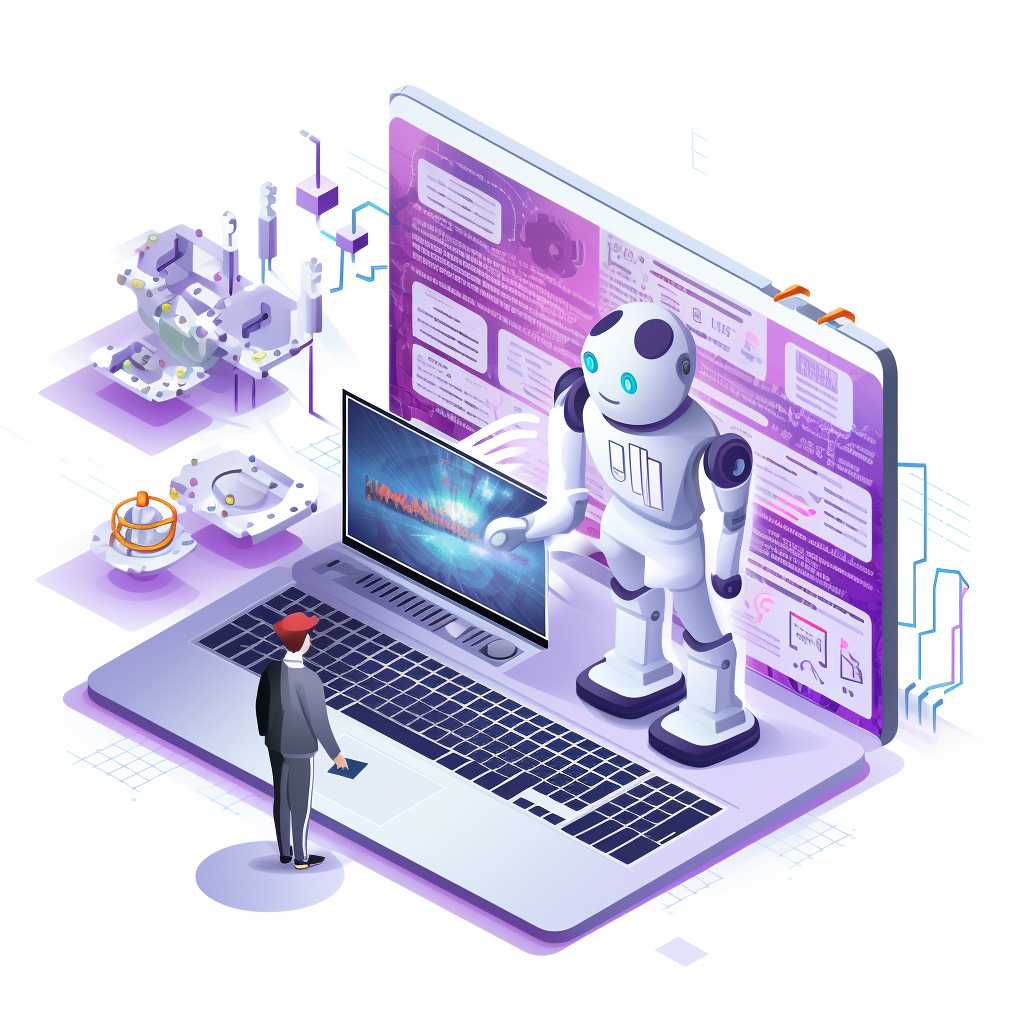
At AlphaQuad, our approach is to utilise AI to enhance our capabilities, not to replace our team’s creativity and intuition.
While the efficiency of AI content tools is undeniable, the quality of the content it produces can vary depending on the task you are asking AI to help with. AI struggles to replicate the human capacity for understanding content, crafting narratives, and evoking emotional responses; however, an AI content tool is excellent at processing large volumes of data, generating reports, and creating straightforward, fact-based content. AI is also effective for news updates, financial reports, or product descriptions…basically, tasks where human creativity is less imperative. So, AI can be used most efficiently for more logical tasks than creative ones.
With this awareness that AI-generated content can feel generic and lack the unique perspective that a human writer brings, we also wonder if at least some element of fallibility enhances content. AI hallucinations (lies) are examples of fallibility, but they don’t seem so. It feels more natural to read an oddly constructed paragraph or dubious point. We feel confident writing this, as we’ve covered whether we’ve made a good or a bad argument. Now, that’s what we’re talking about with the limitations of AI.
At AlphaQuad, we recognise both the advantages and limitations of AI. Our approach is to utilise AI to enhance our capabilities, not to replace our team’s creativity and intuition. We leverage AI to handle more mundane tasks such as keyword analysis, data processing, and content creation. This gives our human team more time to focus on strategic thinking, creativity, and crafting content that connects with our audience. AI marketing strategies are only one part of our broader approach, albeit an increasingly important part.
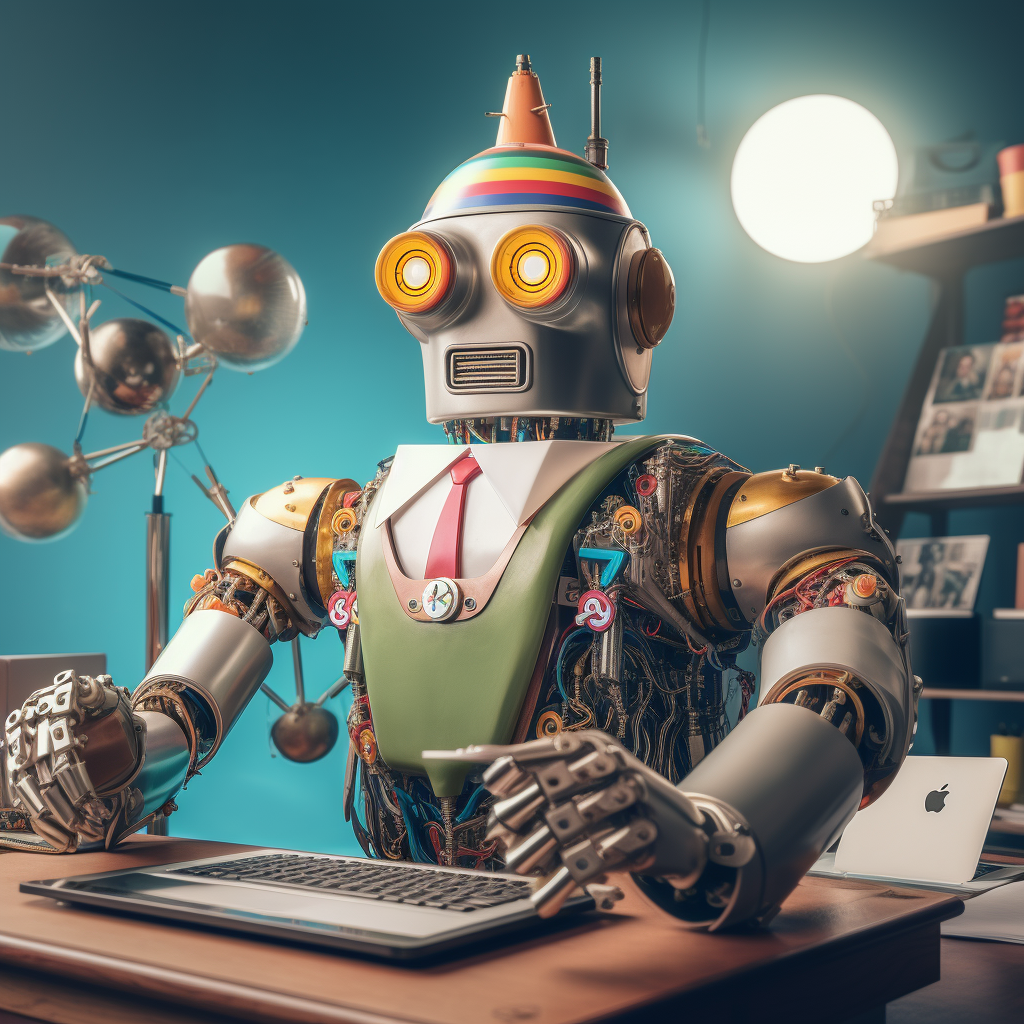
Google’s Position on AI-Generated Content
Google has been relatively transparent about its stance on AI-generated copy, and the search giant prioritises high-quality, valuable content above all. A February 2023 Google Search Central blog asks, “Is AI content against Google Search’s guidelines?” The blog answers, “Appropriate use of AI or automation is not against our guidelines. This means it is not used to generate content primarily to manipulate search rankings, which is against our spam policies.” In short, Google is okay with AI content, but not when that AI content is only being used to gain higher SEO rankings artificially.
According to a December 2022 report, Google Search Quality Guidelines focus on EEAT (Experience, Expertise, Authoritativeness, and Trustworthiness). These factors determine the quality of a webpage’s content, ultimately impacting how the webpage will rank in search engine results. Although AI-generated content has advanced significantly, the ability to consistently produce content meeting these criteria needs to be supplemented. Besides, you must include tangible and relevant experiences, not an AI fabrication, to meet the criteria.
Google’s algorithms prioritise content that offers users genuine value, thus aligning with Google’s EEAT standards. However, Google has also confirmed that AI-generated content can be detected by its algorithm. Generally, SEO results will be higher if it is achieved organically. Although there will always be those who want to gain an advantage over Google through loopholes or new technologies, Google (and its rivals) always looks to find those trying to trick the algorithm and penalise them. At AlphaQuad, we have always maintained that we help Google do what it needs to do to ensure the best information rises to the top. It’s our job to ensure our clients have the best information.
Google’s views of AI reinforce our approach to integrating AI copywriting with traditional copywriting. We utilise AI to enhance our efficiency and provide valuable insights into statistical tasks while asking for help on creative tasks to avoid the occasional issues our human writers may face. We aim to ensure our content resonates with our audience and aligns with Google’s guidelines; this approach is central to our marketing and artificial intelligence strategy. We don’t want our client’s web pages to be penalised – it doesn’t make us look too good!
Ultimately, while AI’s efficiency is certainly appealing, Google’s position underscores the irreplaceable value of human copywriters creating high-quality, engaging content that improves SEO rankings organically.
Google is okay with AI-generated content, but not when that content is only being used to artificially gain higher SEO rankings.
How AI Copywriting Tools Enhance SERP Understanding
SERP, or Search Engine Results Page, is the page you see after entering a query into a search engine. SERPs are a complex blend of content tailored to deliver an optimal user experience. SERPs will show a mix of organic results, paid ads, and other search features.
With the advancement of AI copywriting tools, understanding and leveraging SERPs have become more intuitive. Here’s how AI content tools aid in breaking down each component:
- Organic Results
A search engine’s algorithm ranks these based on relevance, website quality, and content quality. AI copywriting tools analyse these factors, helping writers optimise their material. By pinpointing what makes content rank organically, AI guides writers in creating more effective, search-friendly content. - Paid Results (PPC ads)
PPC ads are paid-for ads companies pay for. These will typically be labelled with an “Ad” tag. By evaluating successful ad patterns, AI content tools can suggest optimal phrasing and keywords to boost click-through rates. - Featured Snippets
These boxes near the top of a SERP directly answer a user’s query. These can take various forms, including lists, tables, or paragraphs – depending on the query type you have searched. AI content tools understand compelling featured snippets. By analysing the kind of queries that produce snippets, AI content tools can assist in structuring content like lists, tables, or paragraphs to increase the chances of landing a higher SERP result. - Local Pack
This displays a map including local businesses relevant to location-based queries. AI content tools can help businesses understand local search patterns, offering insights into what local consumers are looking for and better optimising their listings. - Image, Video, or News Results
These are rows of media related to a search query. AI-driven platforms can provide insights into trending media content, allowing creators to produce media that’s more likely to appear in SERP rows. - Related Searches
These are suggestions at the bottom of a SERP for related queries. AI can predict related search patterns, enabling websites to anticipate user needs and create content that effectively addresses these queries.

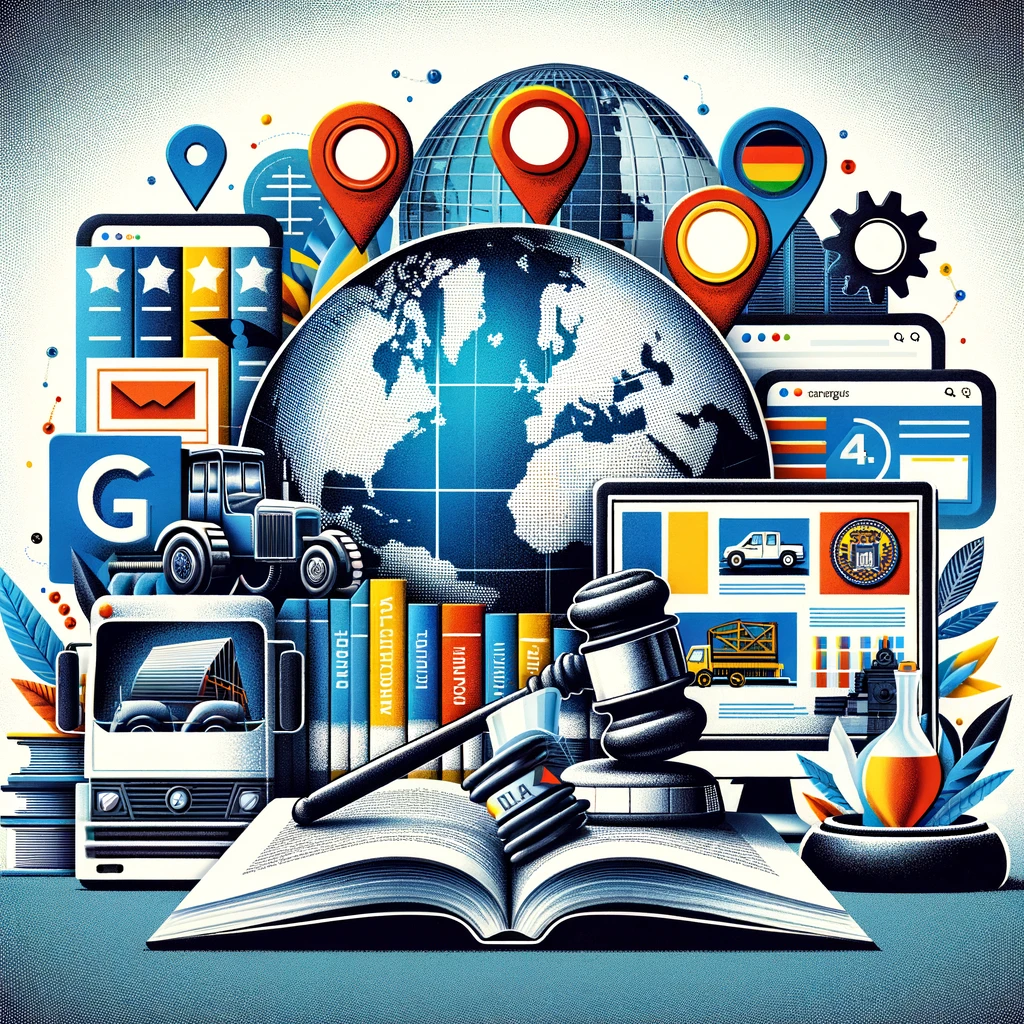
There can be location-specific nuances to SERP. These include:
- Localisation
AI understands geo-specific trends. When optimising local searches, AI content tools can suggest material tailored to specific locales. For example, a query in London will receive different Local Packs compared to the same query in Cardiff. - Language and Terminology
These cover differences in terminology. AI copywriting tools can effortlessly switch between differences in international languages. This can be as simple as changing “lorry” (the UK term) to “truck” (the US term) or as far as translating to a different language entirely. - Domain Prioritisation
AI content tools can evaluate the credibility and relevance of different domains, ensuring content is optimised for domain-specific SERPs, like “Google.co.uk” in the UK or “Google.com” in the US. - Legal and Regulatory Differences
UK regulations can affect how certain industries or contents are displayed, and AI is adept at recognising these regulations. This ensures content is compliant, especially in sensitive sectors like online gambling. - Cultural Context
Understanding and respecting cultural nuances is key. AI content tools provide insights into region-specific cultural trends, ensuring search results reflect a region’s history in a manner that is true to its roots.
Will AI replace writers?
A question that repeatedly presents itself, especially in recent years, is, “Will AI replace writers?” It’s a tricky question with no clear answer. While AI has become a convenient tool for writers in all industries globally, there is no replacement for human writers as the primary source of creative output…yet.
Of course, there are examples of how AI already impacts these writers. The 2023 Writer Guild of America strike arose from fears of job displacement and unfair practices, exacerbated by the increasing use of AI-generated content in screenwriting.
The WGA strike sharply focused the conversation about AI and jobs, fuelling apprehension around AI and its potential impacts on employment. Public opinion on the impact of AI on jobs varies, as several factors, including occupation, industry, geographic location, and understanding of AI, shape general perception. It’s easy to feel positive, for example, about ChatGPT’s ability to produce a basic legal agreement. That is unless you’re a solicitor.
In contrast, roles that require creativity, critical thinking, or emotional intelligence are more secure. The fear is not unfounded and has historical precedents. Technological advancements have often resulted in shifts in the labour market. However, it’s also worth noting that while technology can render some jobs obsolete, it has also created new roles and industries.
There is no telling what advancements will be made in the near future. The possibilities seem limitless.

AI-Generated Images
AI-generated content extends to more than written content. AI image generators are increasingly becoming as popular as AI copywriters. AI image generators like Midjourney, Canva AI, and Adobe Firefly have taken AI content generation by storm.
These are advancing at an amazing rate, with last year’s crude, malformed images being replaced by photo-realistic images on demand. You still have to be selective in your choice of image from the many that can be produced from your prompt (an instruction to the AI for what image to produce), but most are good to excellent.
The current challenge is that you get a pseudo-random image based on your prompt, as it’s pretty difficult to describe any image beyond the most basic, as anyone who’s played Pictionary will tell you.
We are currently halfway between stock photography and actual photography. We’re not entirely restricted, but we don’t have complete freedom. We expect the next generation of AI image generators to follow what can already be done with Chat-GPT in terms of iterative changes based on instructions, “Use the same image but make the person on the right slightly taller and remove the teapot”. This is somewhat possible with Adobe Firefly, but it requires manual selection of the areas to change and no real control over the whole image.
We seem to be spending more and more time looking for strange elements in the pictures we generate, and you have to be careful.
Below are some AI-generated images. See if you can tell what is not quite right. The one on the right is a bit more obscure.


Did you catch it?
The image on the left shows a hand on the man’s shoulder. Something about AI image generators is they often don’t quite get human hands right.
The image on the right shows a woman walking on Arthur’s Seat in Scotland. The woman in the image looks blurry, and her face is completely obscured, creating an uncanny valley effect.
Also, if you look at the left side of the image, a Mountain Lion is looking down at the woman – there are no such animals on Arthur’s Seat, I just added this for a bit of menace.
The Pitfalls of AI-Generated Imagery
A recent viral social media trend of generating short-form clips inspired by the work of particular filmmakers and artists has been met with two differing opinions.
- The “wow, that’s so cool, I wish [X director] has directed [X film}” crowd; and,
- The “hmmmm, I’m not so sure about this” crowd.
Which category you fall into is entirely up to the individual. We do, however, have a filmmaker’s response to this trend. One such example depicted ‘The Lord of the Rings’ in Wes Anderson’s style. What AI was unable to do, however, was understand that Anderson’s style is more than just a solitary actor solely standing centre-frame with a ghostly facial expression in an elaborate costume. Anderson’s response to these AI imitations was, “I choose not to really engage. I don’t want to see a version of me, even if it’s good”, which is a fair assertion. Imitation is the sincerest form of flattery; however, this is followed by considering whether it is ethical to deduce an artist’s distinctive style to one specific thing when that is relatively disrespectful to that artist. There is no right or wrong opinion on this matter; it’s pretty harmless, but it is also an interesting conversation about how those who are respected enough to be imitated feel about being imitated.
With Hollywood at its knees over how AI is going to be incorporated into the entertainment industry in 2023, it can either be seen as a kick in the teeth to those who are not so keen on using AI in their art or can also be seen as proof that AI-generated imagery is not currently up to scratch, and should not be perceived as a threat, yet. Simultaneously, the opening credit sequence for Marvel Studios’ recent Disney+ series ‘Secret Invasion’ was entirely AI-generated. Fans mocked it, while the showrunner defended it. It was a poorly-timed, bizarre situation and an interesting week to be a Twitter (or rather, an X) user.


Future Trends in AI-Generated Content
The intersection of AI copywriting and traditional copywriting is still evolving, promising numerous advancements that could further reshape the content creation and marketing landscape. Here are some anticipated trends and how they may affect the industry:
The increasing sophistication of AI writing tools
As AI continues to evolve, we can anticipate an increase in the sophistication of AI writing tools. This could range from more nuanced language understanding to better mimicking human creativity and style, which may improve the quality of AI-generated content. We expect to see advances in content creation interfaces as the current crop is basic and unintuitive.
Hyper-personalisation
AI’s ability to analyse vast amounts of data will drive hyper-personalisation in content creation. As AI becomes more capable of understanding user behaviour, we can expect content to be tailored even more precisely to individual preferences, improving engagement and conversion rates. The option to target content to individuals will become as commonplace as retargeting adverts to individuals based on their browsing history.
The integration of AI and VR
With the rise of Virtual Reality, there’s potential for AI to play a crucial role in creating immersive content experiences. This could see context-specific AI-generated copy that enhances VR experiences.
Ethical considerations and guidelines
As AI’s role in content creation grows, we can expect more consideration and implementation of ethical guidelines. There will likely be increased scrutiny on issues like transparency (disclosing the use of AI in content creation), potential biases in AI algorithms and data privacy.
As AI better understands user behaviour, we can expect more precisely tailored content for individual preferences.
Overall
So, as we navigate the modern day, where AI is being integrated into almost every digital facet of our lives, it would be an understatement to say that AI is rewriting the rules of copywriting and content creation. AI’s efficiency generates large volumes of content and provides valuable tools to aid complex challenges that can arise for human copywriters. AI still has its limitations in what it can produce, as there is yet (and very strong emphasis on yet, because it’s coming) to be an AI language model that can truly emulate the tone, style and voice of a human writer; however, when presented with more analytical tasks, AI’s potential is as vast as it is exciting.
However, any analysis of the inherent qualities of AI-generated content and Google’s stance on it emphasises the irreplaceable value of human creativity and emotional intelligence in producing truly engaging, high-quality content. The current landscape still calls for a delicate balance between leveraging AI’s efficiency and respecting the unmatchable richness of human input in AI copywriting, which resonates with audiences on an emotional level.
At AlphaQuad, while we recognise and harness the power of AI in improving our efficiency and navigating the intricate terrain of artificial intelligence in marketing, we emphasise the human element in our content creation process. The spark of creativity, empathy, and intuition that our human team brings to the tale is a critical differentiator in the digital content landscape.
Explore our approach to digital marketing strategy, integrating AI tools for maximum impact.
The potential developments in AI technology, from the increasing sophistication of AI copywriting tools and the dawn of hyper-personalisation to integrating AI with emerging technologies such as AR and VR, present a future teeming with opportunities. As we move forward, we at AlphaQuad are ready to adapt and align our AI marketing strategies with these advancements while ensuring we maintain our core belief in the indispensability of human input in AI copywriting.
While AI undeniably transforms the copywriting and content creation industry, it remains an enabler, not a replacement. The questions: “Will AI replace writers?” and “Will AI take over copywriting?” should be “How will AI change copywriting for writers?”. The future of content creation lies not in AI alone but in the harmonious blend of AI’s profound capabilities and human creativity. This blend has assisted in crafting this article, marrying the power of AI with human ingenuity to create engaging, insightful, and resonant content (hopefully).
And I, for one, welcome our new AI overlords, or at least the ones who scan this document.
If you’re interested in leveraging AI in your digital marketing efforts, contact us to discuss your needs.
The future of content creation lies in the harmonious blend of AI and human creativity.
